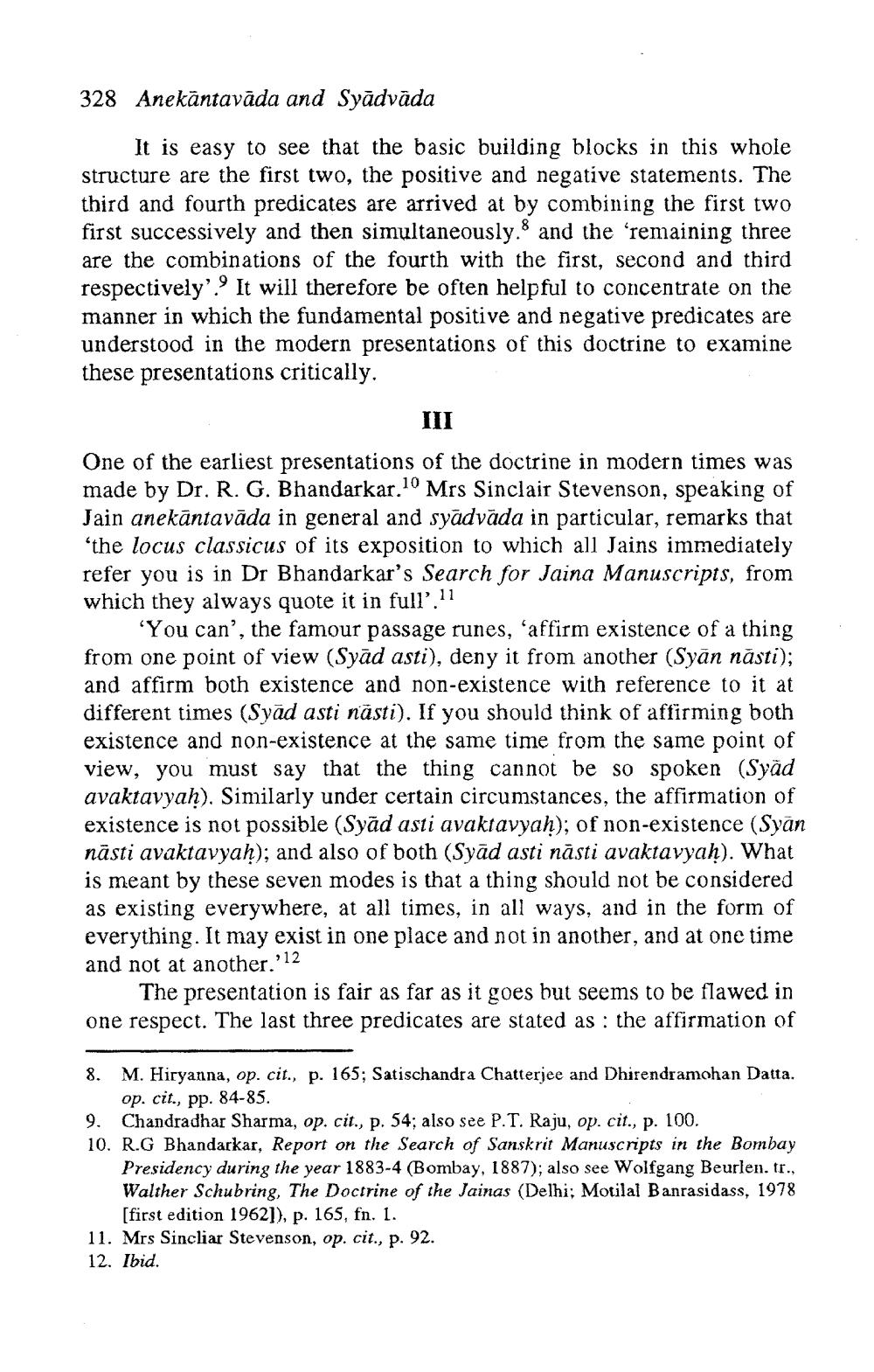________________
328 Anekantavāda and Syādvāda
It is easy to see that the basic building blocks in this whole structure are the first two, the positive and negative statements. The third and fourth predicates are arrived at by combining the first two first successively and then simultaneously.S and the remaining three are the combinations of the fourth with the first, second and third respectively. It will therefore be often helpful to concentrate on the manner in which the fundamental positive and negative predicates are understood in the modern presentations of this doctrine to examine these presentations critically.
III
One of the earliest presentations of the doctrine in modern times was made by Dr. R. G. Bhandarkar.10 Mrs Sinclair Stevenson, speaking of Jain anekāntavāda in general and syadvada in particular, remarks that “the locus classicus of its exposition to which all Jains immediately refer you is in Dr Bhandarkar's Search for Jaina Manuscripts, from which they always quote it in full'. 11
You can', the famour passage runes, 'affirm existence of a thing from one point of view (Syad asti), deny it from another (Syān năsti); and affirm both existence and non-existence with reference to it at different times (Syād asti nästi). If you should think of affirming both existence and non-existence at the same time from the same point of view, you must say that the thing cannot be so spoken (Syad avaktavyah). Similarly under certain circumstances, the affirmation of existence is not possible (Syād asti avaktavyah); of non-existence (Syān nāsti avaktavyaḥ); and also of both (Syād asti nāsti avaktavyaḥ). What is meant by these seven modes is that a thing should not be considered as existing everywhere, at all times, in all ways, and in the form of everything. It may exist in one place and not in another, and at one time and not at another.'12
The presentation is fair as far as it goes but seems to be flawed in one respect. The last three predicates are stated as: the affirmation of
8. M. Hiryanna, op. cit., p. 165; Satischandra Chatterjee and Dhirendramohan Datta.
op. cit., pp. 84-85. 9. Chandradhar Sharma, op. cit., p. 54; also see P.T. Raju, op. cit., p. 100. 10. R.G Bhandarkar, Report on the Search of Sanskrit Manuscripts in the Bombay
Presidency during the year 1883-4 (Bombay, 1887); also see Wolfgang Beurlen. tr., Walther Schubring, The Doctrine of the Jainas (Delhi; Motilal Banrasidass, 1978
[first edition 1962]), p. 165, fn. 1. 11. Mrs Sincliar Stevenson, op. cit., p. 92. 12. Ibid.




